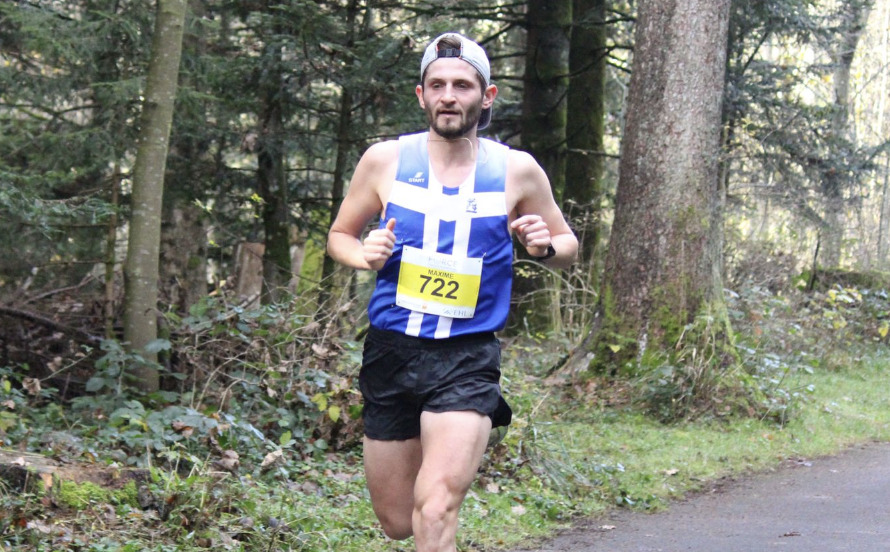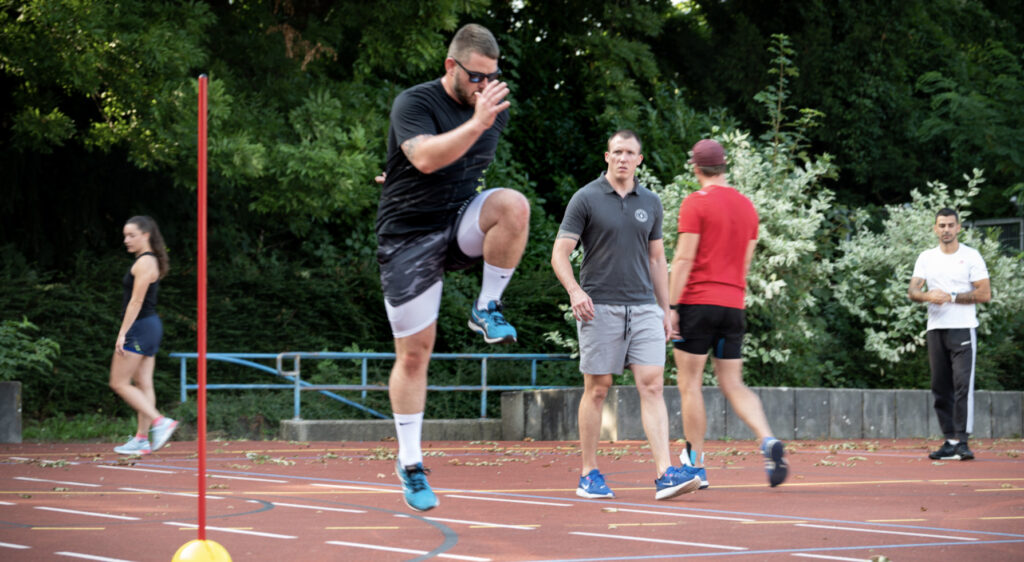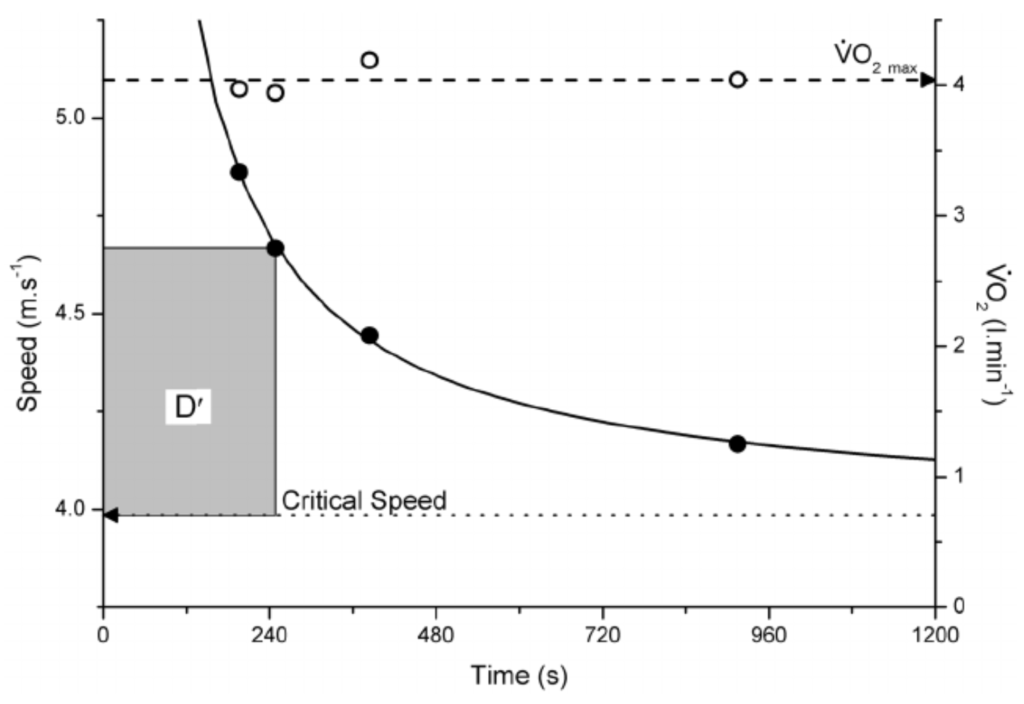Are you a runner looking to improve your endurance capacity and performance in middle-distance or long-distance events? If so, you may have heard about a term called “critical speed”. Critical speed (also called critical velocity) is a crucial factor that describes an athlete’s endurance capacity. It can be used to develop a personalized training plan to help you achieve your goals. In this article, we will talk about critical velocity and how you can use it to improve your performance.
If you want to calculate running speeds, paces, and distances we built these running calculators just for you!
So, let’s dive in and discover the benefits of using critical speed for runners!
What is Critical Speed?
Critical Speed (CS) refers to the maximum speed that a runner can maintain for an extended period of time, where the rate of oxygen delivery by the heart & lungs is able to match the rate of oxygen uptake by the working muscles. Running at speeds above CS accumulate fatigue at a much faster rate, and the maximal sustainable running time declines precipitously.
Some performance tests determine training thresholds by gradually increasing the running speed and/or gradient until the workload can no longer be maintained. These tests predict the maximal sustainable running speed “from below”. CS, on the other hand, predicts the maximal sustainable running speed “from above” by a series of shorter maximal efforts. This means CS is often higher than estimates from other testing methods.

Often, athletes with higher CS can not only maintain a higher absolute running pace, but they can maintain that steady state running pace at a higher relative intensity (higher fraction of their VO2max).
Along with critical speed (usually expressed in m/s, km/h or min/km) comes a second parameter called D’. D’ (pronounced “D prime”) is a measure of the runner’s work capacity above CS (expressed as a total distance in meters). Sometimes this is called the ‘anaerobic reserve’, however this is not wholly correct, since D’ represents the combined capacity of a runner’s aerobic and anaerobic energy systems. D’ is an especially important parameter in shorter events that require a lot of “kick”.
Critical velocity is a useful tool for endurance athletes to determine their optimal pacing strategy for middle to long-distance events. CS is also a useful metric to individualize and organize training intensities.
Benefits of knowing your Critical Speed as a runner
The use of critical speed in running can provide numerous benefits for athletes looking to improve their endurance capacity. One of the main benefits of using CS is the ability to determine an athlete’s optimal pacing strategy for long-distance events and workouts. By identifying their critical velocity, runners can establish a goal pace that allows them to maintain a steady state of oxygen uptake, which can help delay fatigue and improve performance during the race. Additionally, knowing their CS can help athletes make informed decisions about when to increase their speed or when to slow down during the race, ultimately helping them conserve energy and achieve a faster overall time.

Another benefit of using CS is the ability to monitor changes in an athlete’s endurance capacity over time. By regularly testing for critical speed, runners can track their progress and adjust their training accordingly. This can help prevent overtraining and injury while maximizing the benefits of their training.
Additionally, critical velocity can be used as a tool for coaches to develop personalized training plans for their athletes, taking into account their individual physiological characteristics and training history. You can for example combine CS testing and lactate testing to establish an athlete’s full physiological profile. Overall, incorporating critical speed into a runner’s training can provide numerous benefits for improving their endurance capacity and performance in long-distance events.
Disadvantages of using Critical Velocity
While there are numerous benefits to using critical velocity in running, there are also some potential disadvantages to consider.
One of the main disadvantages is that CS testing can be physically demanding and time-consuming, requiring runners to perform multiple bouts of high-intensity exercise. This can have a deleterious impact on the athlete’s regular training and on the athlete if not properly managed. Additionally, critical speed testing may not be suitable for all runners, particularly those who are new to running or have underlying health conditions that make high-intensity exercise unsafe.
Another potential disadvantage of using critical velocity is the limited accuracy of the test. While critical speed can provide valuable information about an athlete’s endurance capacity, it is not a perfect predictor of performance.
Additionally, CS may not accurately reflect changes in an athlete’s fitness over time, particularly if their training focuses on improving other aspects of performance, such as speed or power.
Overall, while critical speed can be a useful tool for runners looking to improve their endurance capacity and performance, it is important to consider its potential limitations and use it in conjunction with other training methods and strategies.
Critical Speed Testing for Runners
As mentioned above, we can calculate critical speed in different ways for runners.
The most accurate and time-consuming way requires multiple maximal efforts above CS (think 3 to 20 minutes in duration) to draw the speed/duration relationship. From this data, we are able to extrapolate the athlete’s critical velocity.

Coaches and researchers are finding novel and practical ways to establish critical speed. This includes using training data to calculate CS.
Alternatively, we can use a two-parameter model to calculate critical speed. This approach is described in this paper from 2019. To use this model, the athlete only needs to complete two maximal running efforts over 1200m and 3600m. Those should take place after a thorough warm-up. The times (in seconds) are then entered into a calculator (as below) which calculates the critical speed as well as the D’ for the athlete. If conducted on the same day, at least 40 minutes of active recovery should occur during the two tests. This time is necessary to recompose the D’.
If the athlete is not familiar with the pacing of these efforts, the results might underestimate their true ability.
Calculating Critical Speed for Running
If you wish to apply the concepts described in the paper linked above, you can use this calculator to determine your CS and D’ parameters. Simply enter your times (in seconds) for each effort (1200m and 3600m) to get the results.
Critical Velocity Calculator
How to use your Critical Velocity in Running
In order to use critical speed to organize your training, the first step is to determine your personal CS through testing. Once you have established your critical velocity, you can use this information to develop a personalized training plan. One effective way to use critical speed in training is to set your training paces based on a percentage of your critical speed. The downside of this approach is that CS doesn’t tell us anything about the athlete’s first lactate threshold, or what happens below CS. This means that in the absence of a lactate test (or gas exchange, or Moxy test) the transition from moderate to heavy intensity is estimated, not measured.
Another way to use critical speed effectively is to plan and individualize high-intensity interval training. We can use the combination of CS and D’ to estimate time to task failure (i.e. how long you can hold a given pace above CS). This approach is described in detail in this paper by Andrew Jones et al (2017).
Finally, the critical speed model can also be applied to race strategy. How long can you hold a give speed and when can you afford to go beyond it and “kick”? More information on this approach can be found here.
Conclusion
In conclusion, CS is a valuable tool for runners looking to improve their endurance capacity and performance in long-distance events. By determining your critical velocity and using it to organize your training, you can establish a personalized plan that maximizes the benefits of your training sessions. Whether you’re a beginner or a seasoned athlete, incorporating critical speed into your training can help you track your progress, set achievable goals, and ultimately reach your full potential as a runner.
Special thank you to my friend and colleague Jem Arnold for his insights and corrections.

Author
Sean Seale – Upside Strength
Sean is a Performance Coach specializing in physiological testing for CrossFit and Endurance Sports athletes (cycling, running, triathlon, swimming, etc.). Sean also works as a consultant and trainer for gym owners, sports organizations (regional and national), and coaches wishing to deepen their knowledge or their approach in this area.